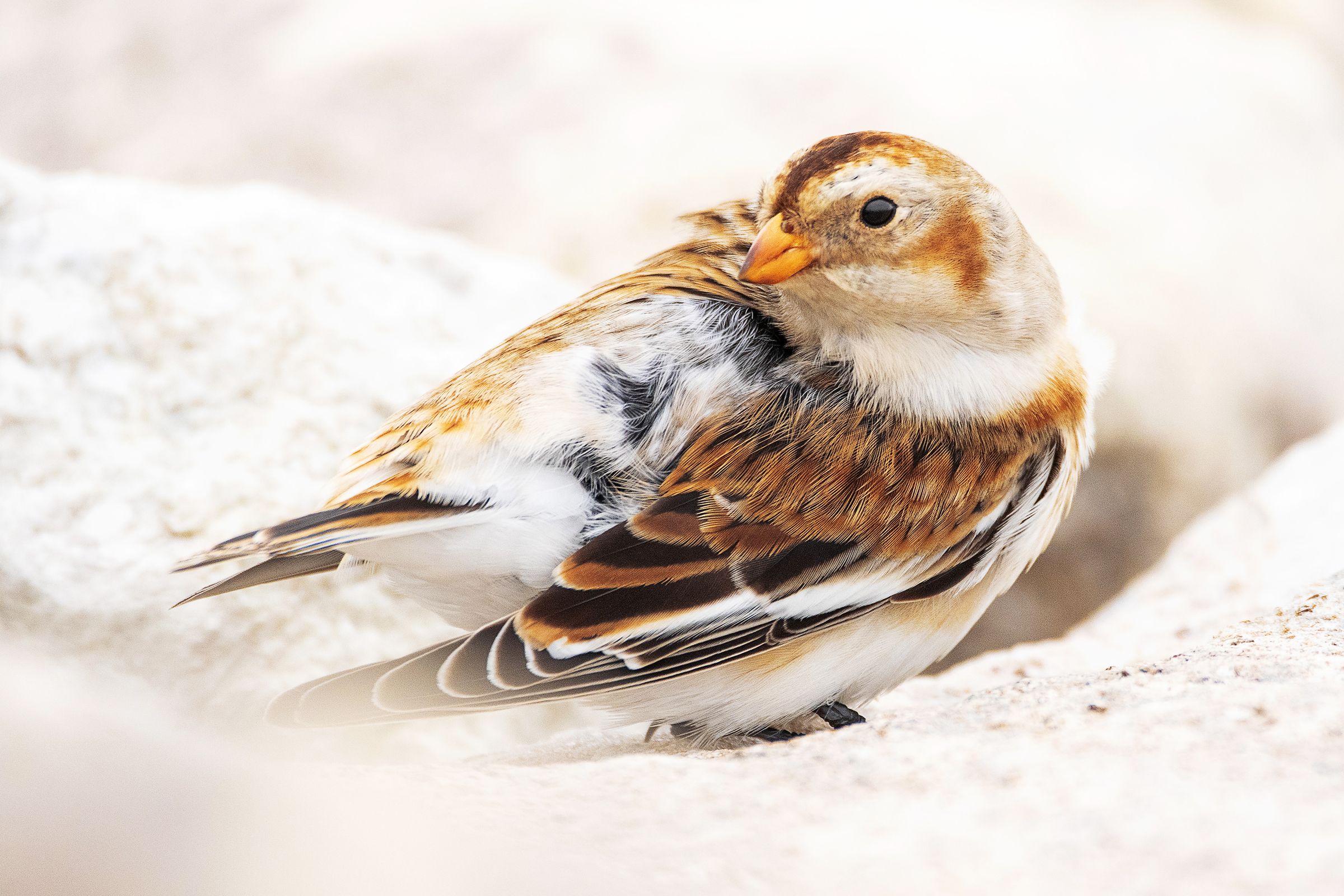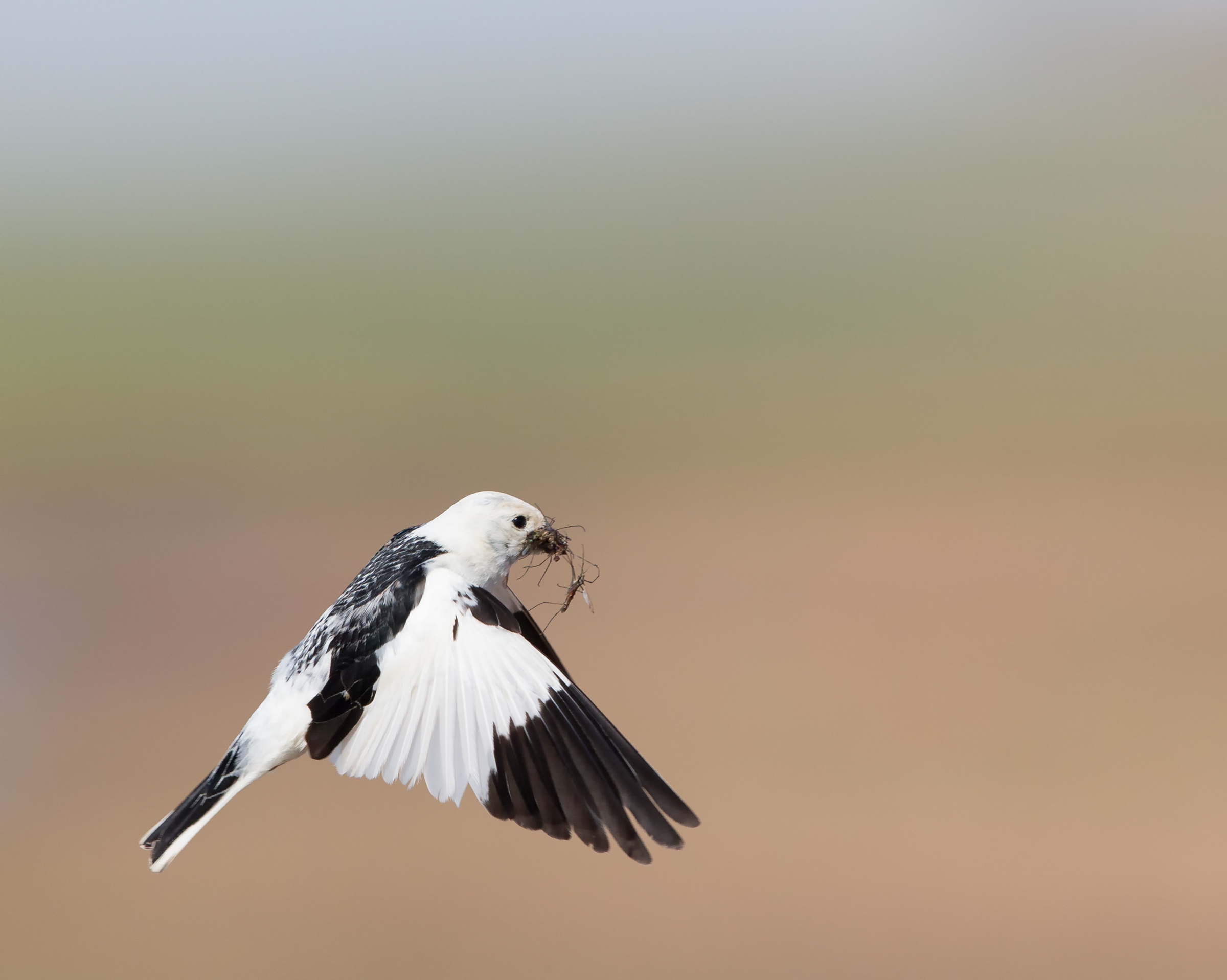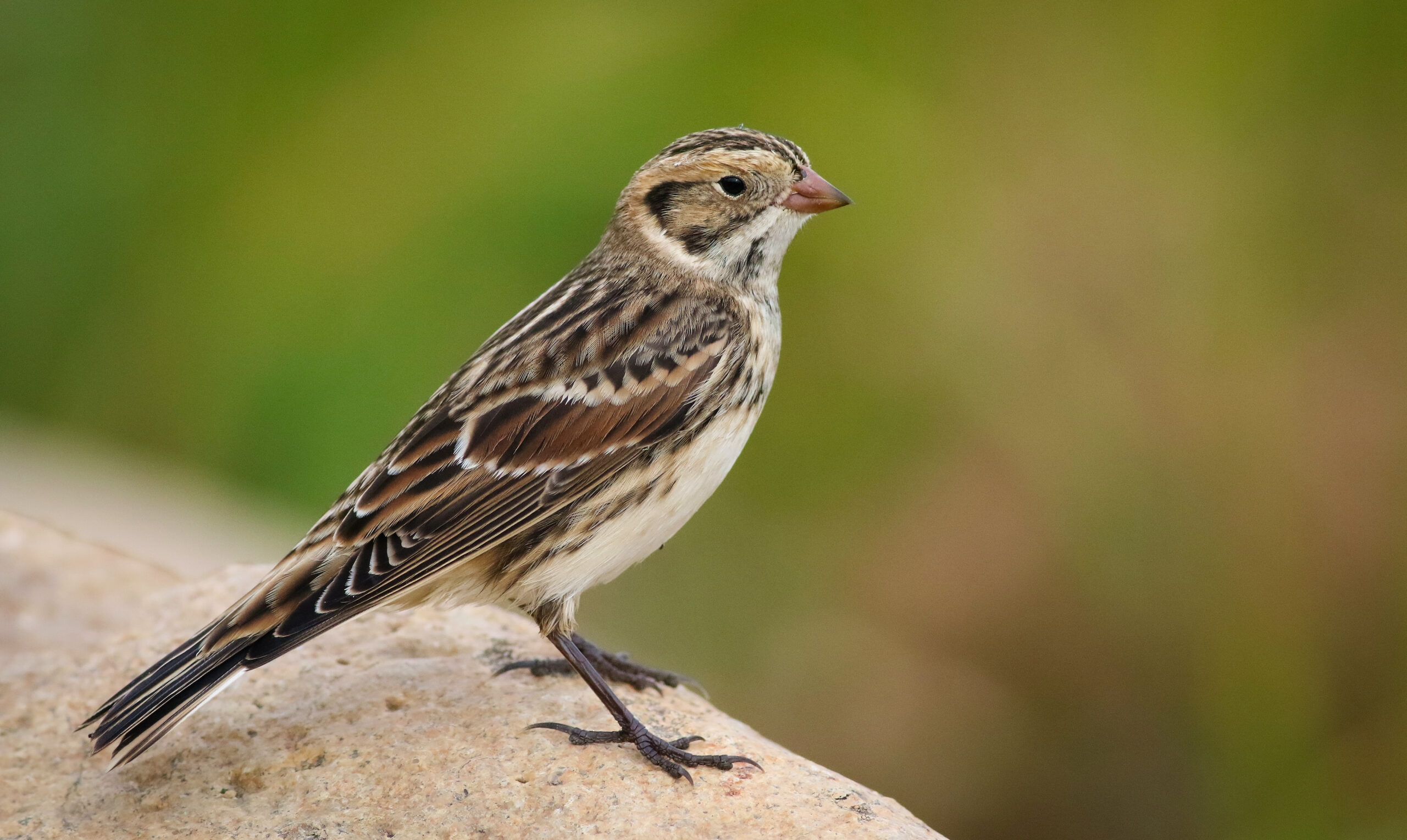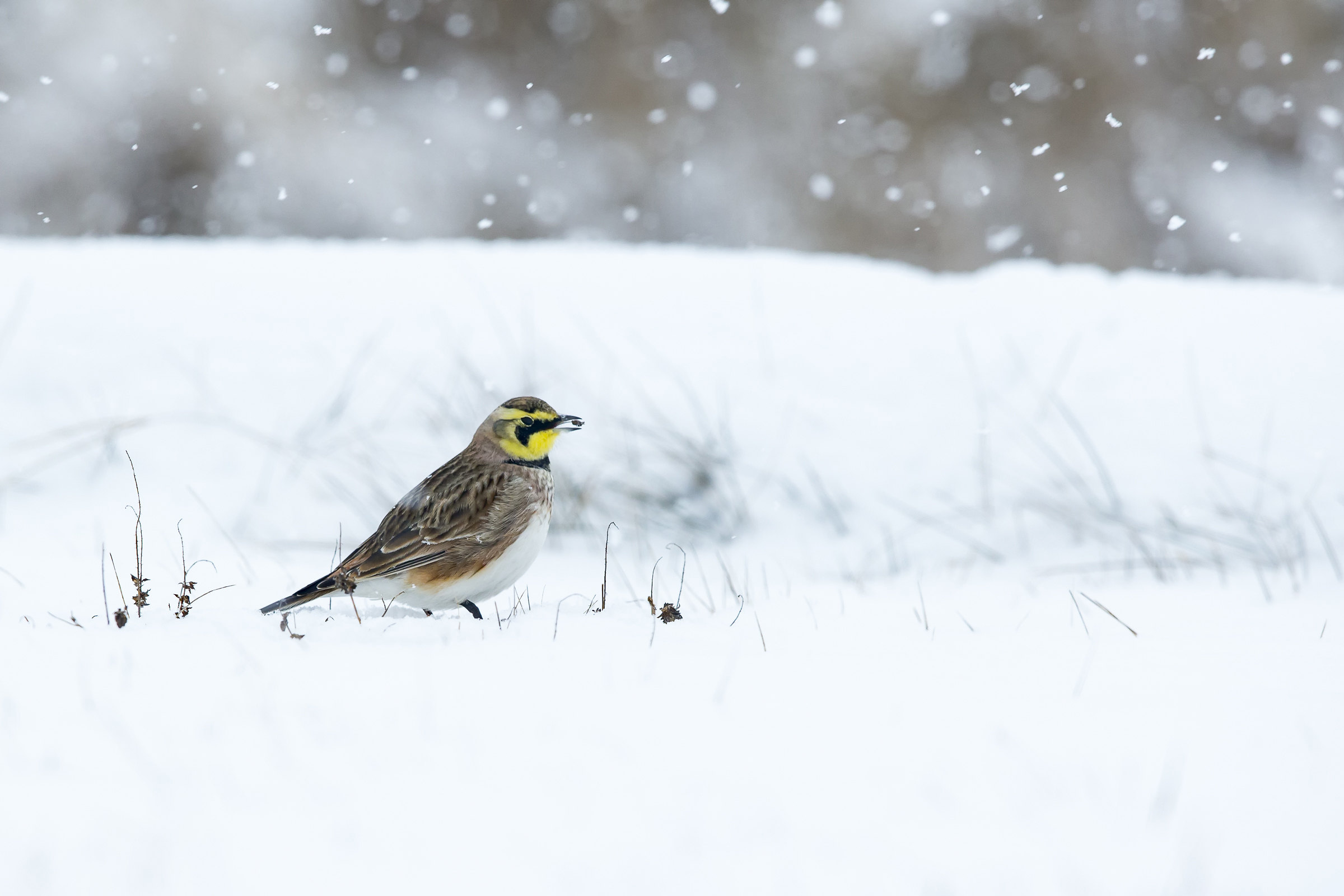BIRD LORE: Winter birding in Lycoming and Clinton Counties
By Bruce Buckle, Lycoming Audubon Society
What is there to do on cold winter days in January and February? If you live in or are visiting Clinton or Lycoming Counties in the I-80 Frontier landscape of the PA Wilds, how about a drive along Old River Road in South Avis, or a road trip to Cogan House Township to look for Snow Buntings and Lapland Longspurs in open farm fields! Or look for these songbirds wherever you see agricultural fields spread with manure.
Image: Snow bunting, Jessica Nelson, Audubon Photographic Award (APA), 2019

So what attracts these songbirds, as well as large flocks of Horned Larks, to these fields? In a word, seeds. Manure contains seeds that provide sustenance, and though these little birds are as hardy as they come, it also provides some warmth for roosting during especially cold periods. Snow Buntings and Longspurs blend in well with the ground, so even if you don’t see anything at first be patient and look for movement. A few inches of snow on the ground provides contrast, and their restlessness while foraging helps in finding these species.
Sometimes distance from the roadside makes these birds difficult to identify, even with a good pair of binoculars. Again, patience is needed, especially as Snow Buntings and Longspurs are often found in mixed flocks, outnumbered by the more commonly seen Horned Larks. According to the Cornell Lab of Ornithology range maps, the vast majority of Lapland Longspurs winter on the Great Plains, so they are less likely to be found in our area than Snow Buntings. South of north central Pennsylvania, range maps indicate Snow Buntings are scarce, so you are not guaranteed to find them either.
Image: Snow bunting in breeding plumage, William Wingfield, Jr., APA 2016

To give yourself a better shot at locating these birds, or any other target species, explore eBird records at ebird.org/explore for sightings in Lycoming and Clinton Counties.
Snow Buntings and Lapland Longspurs, family Calcariidae, both breed in the Arctic tundra. Snow Buntings nest in rock crevices for protection from predators, and for warmth during the still freezing spring temperatures. Longspurs conceal their ground nests under vegetation, weaving grass cups often lined with feathers or fur. Though the North American breeding population of Lapland Longspurs is stable (estimated at 66 million by Partners in Flight), the Snow Bunting population is in decline (estimated at 14-15 million by the American Bird Conservancy).
The Canadian Snow Bunting Network at the University of Windsor is working to understand this decline in the Snow Bunting population. While there are any number of potential causes, including habitat loss, current studies are also examining the impact of warming temperatures in the Arctic on this cold-adapted species.
In his latest book, A World on the Wing, renowned researcher and author Scott Weidensaul wonders how birds will adapt to phenological changes; that is, changes in the timing of recurring biological events caused by the changing climate? For example, if warmer temperatures cause a mismatch between the timing of insect hatches and bird migration and breeding patterns, will birds be able to modify their physiology and behavior, called phenotypic plasticity by biologists, in response? Will their ability to survive long migrations and their ability to reproduce be affected?
Image: Lapland longspur, Skyler Kardell, APA 2021

While the ability of birds to adapt to the changing climate is still up in the air, when combined with the challenges of habitat loss, window strikes, outdoor cats, and other threats, and estimates that we’ve lost 30% of the bird population in North America over the past 50 years, we should be concerned.
Though winter birding may seem less exciting, or more daunting, than a springtime walk in the woods filled with singing birds en route to their breeding territories, it still has its pleasures. Watching a Northern Harrier fly over the grasslands at the Robert Porter Allen Natural Area, or seeing Buffleheads diving for food from the River Walk in Williamsport, or listening to White-throated Sparrows chirping away on the trails at the Williamsport Water Authority, or finding winter birds like Horned Larks, Lapland Longspurs, and Snow Buntings in area farm fields, all offer respite from the shorter days and colder temperatures of winter.
Image: Horned lark, Rajan Desai, APA 2017

To enjoy these and other fun birding experiences, you are encouraged to become involved with your local Audubon chapter. Chapters enable Audubon members and others to meet and share an appreciation of their common interests. They create a culture of conservation in local communities through education and advocacy, focusing on the conservation of birds, other wildlife and conservation of important habitats. To find a chapter in your area, use the Audubon Near You page.
About the Author:
Bruce Buckle is a retired educator and the President of the Lycoming Audubon Society chapter, located in Williamsport.
About BIRD LORE:
BIRD LORE is produced by the Lycoming Audubon Society (serving Lycoming and Clinton Counties), Seven Mountains Audubon (serving Union, Snyder, Northumberland, Montour and Columbia Counties) and Tiadaghton Audubon Society (serving Tioga and Potter Counties). Information about these National Audubon Society chapters can be found at lycomingaudubon.blogspot.com and sevenmountainsaudubon.org and tiadaghtonaudubon.blogspot.com.


